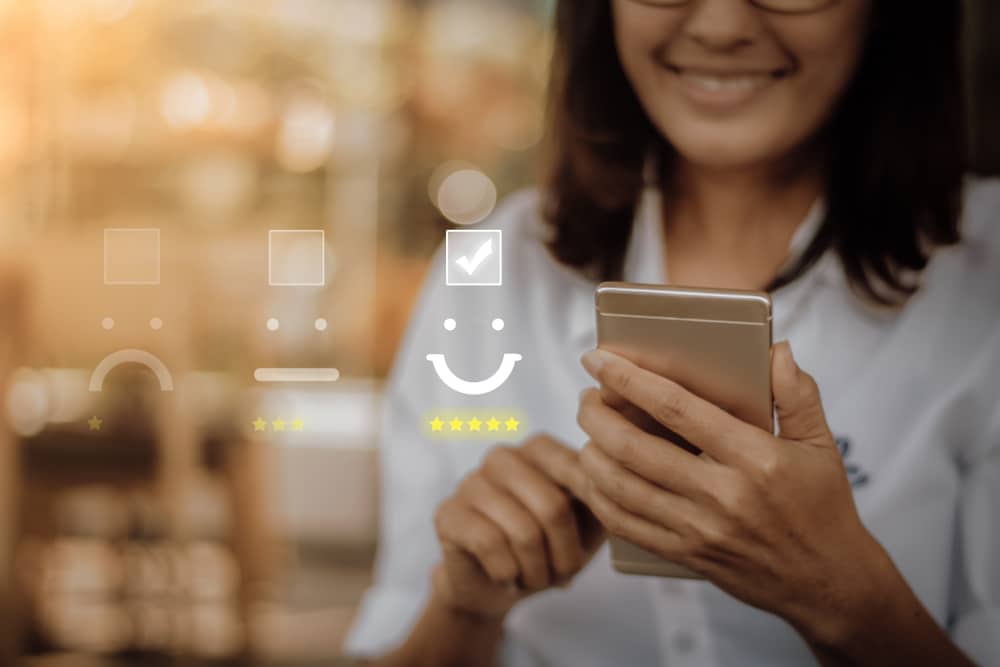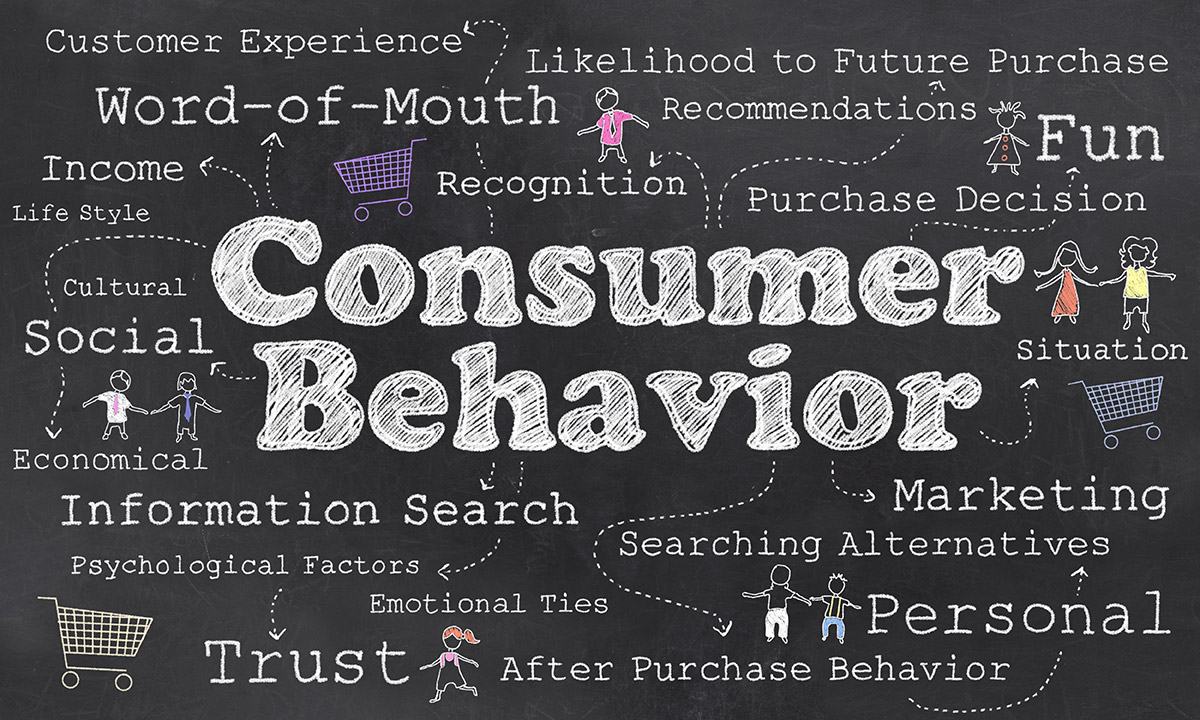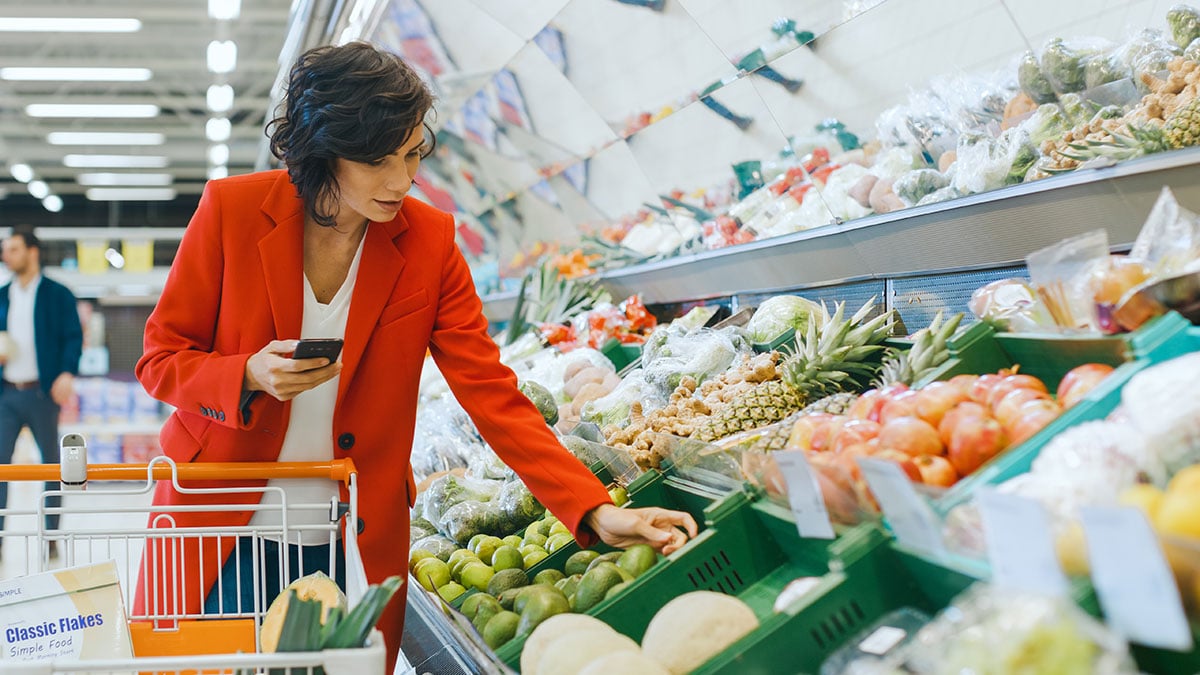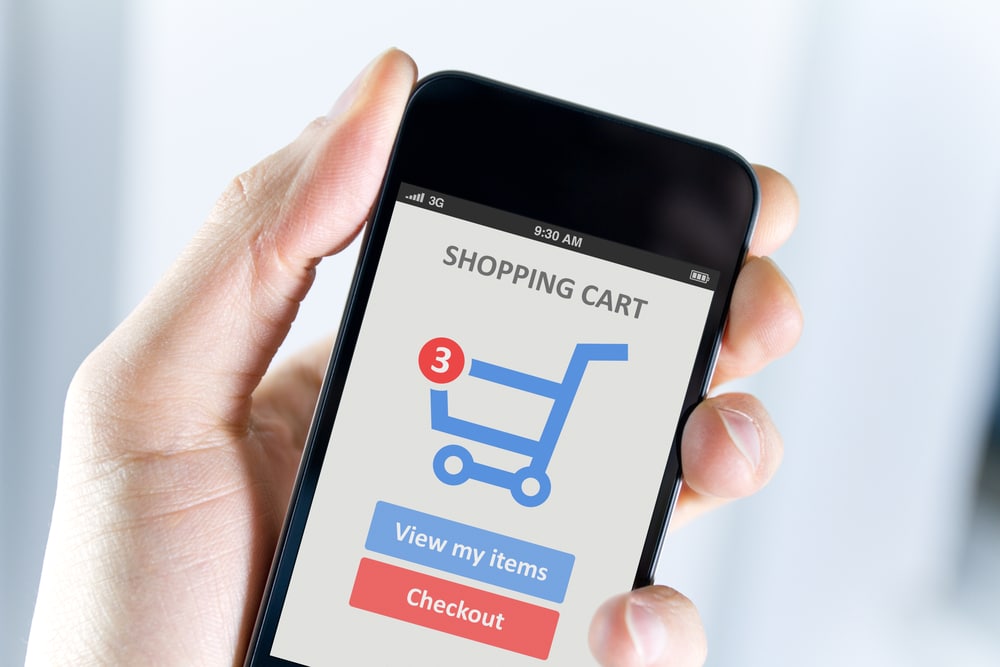As gaining shelf space becomes more competitive for brands, marketers should be looking into leveraging one of the various types of product positioning strategies. Continue reading “3 types of product positioning strategies and how to best leverage them”
Category: Marketing
Customer retention marketing: 3 ways to maintain customer loyalty

In our customer-centered economy, where competitors would gladly engage with those your business has overlooked, customer retention is more important than ever before. Continue reading “Customer retention marketing: 3 ways to maintain customer loyalty”
What to include in your product awareness campaign

The elements of a product awareness campaign should tie in the what, where, and when of a new product release. Continue reading “What to include in your product awareness campaign”
How to increase sales without lowering price

There’s nothing wrong with offering a deal on your product; especially since shoppers are always on the hunt for a bargain. Continue reading “How to increase sales without lowering price”
Extended reach: 3 effective mobile marketing strategies

CPG brands must be able to effectively utilize mobile marketing strategies to connect with consumers in the store and online. Continue reading “Extended reach: 3 effective mobile marketing strategies”
Understanding the factors influencing consumer behavior

Understanding the factors influencing consumer behavior
When it comes to CPG purchases, consumers can change their minds very quickly because oftentimes the purchase isn’t seen as something with long-term consequences. The low price point of these products makes consumers more willing to try new things and deviate from their existing purchase patterns. Brands can further drive purchase decisions by offering rewards programs and incentives that encourage consumers to test out new products.
Breaking Down the Factors Influencing Consumer Behavior
Cracking the code to consumer behavior has long been a goal of marketers. By understanding why they purchase, marketers can address those issues and improve advertising. The factors that influence consumer behavior can be broken down into four comprehensive categories.
Market culture:
The culture within the market will determine the consumer’s overall desire for a particular product. For example, a discount baby supply store would not likely do well in a neighborhood populated with millionaire retirees, but would be an excellent addition to a community where a lot of middle-class families live, perhaps near an elementary or nursery school. The market in that particular area would likely be rife with potential consumers, while the retiree’s neighborhood wouldn’t have as many.
Social circles:
People are tied together through the individuals they affiliate with, be it family members or just those who share the same hobbies and interests. Within these social circles will be individuals who make purchase decisions, those who influence purchase decisions, and those who follow them. Consider a traditional nuclear family. One parent might request certain products at the store; the other will do the shopping and take their requests into account. Meanwhile, the children in the household will accept the decisions made between the decision maker and influencer, and later on may choose those brands because they were introduced to them by their parents.
Personal preferences:
Personal preferences are the conscious things people choose for themselves, like the brands they’re loyal to as well as the products they avoid. These preferences often change with age and life circumstances. They can also be impacted by consumers social circles, and the culture in the market where they live. Brands that market to niche groups, like challenger brands, often focus strictly on personal preferences as a matter of marketing as this provides a more authentic feel to advertising.
Psychological triggers:
Psychological triggers can tie into personal preference, but really, they’re about subconscious decisions rather than active ones. Things consumers see, hear, taste, touch, and smell, can trigger positive or negative reactions which brands can use to drive sales. Consider how many brands use the color blue prominently in their logos. The color triggers a feeling of trust and security which brands can impart to their products by using it in their advertising.
Catering to a Culture With Location-Based Mobile Marketing
Location-based mobile marketing allows brands to connect with a specific community and engage users based on the culture of that community. Levi’s gave us a prime example of this when they partnered with Disney and Snapchat on a location-based augmented reality campaign.
Visitors to the store received a Snapchat notification through which they could access a limited time deal. Through an augmented reality feature, they were able to see and even virtually try on a Disney-themed Levi’s hat while at the location. Additionally, shoppers could order the hat through the Snapchat app and have it delivered to their hotel as a souvenir from their vacation.
Exclusivity and an understanding of the market culture helped to make this campaign a success. This is a strategy other brands can leverage by understanding their unique selling points and how they impact the market where they are available. By providing a location-based, limited-time deal, brands can drive consumers to make purchases and enhance the customer experience.
Engaging Social Circles With Interactive Campaigns
Many brands choose to work with influencers to reach a wider audience. However, such relationships don’t always pay off, as influencers may not have the capacity to inspire people to make purchases. It’s far more likely that individuals will be interested in the opinions of those they know. In fact, nearly half of consumers say that recommendations from friends and family members have driven their decision to make purchases.
This is something that Kellogg’s leveraged with their Super Bowl LIII ad for their chip brand Pringles. The brand ran an interactive, livestreaming connected TV (CTV) campaign during the Super Bowl. The campaign served two versions of shoppable experiences, allowing viewers to interact with them via the CBS Sports app on Apple TV. One version of the campaign, which changed a city name based on a user’s geography and revealed different Pringles chip combinations upon swiping, generated over 6.4% engagement.
This strategy helped consumers remember the brand and participate, which also drove them to discuss it with friends and family who could be influenced by the second-hand knowledge. Additionally, the campaign reached consumers on a personal level. Such personalization humanizes brands and creates a connection which can drive purchases.
Using Personalization to Connect With Consumers
Personalization is a bit of a buzzword in the marketing space, and there are many definitions of what qualifies as “personalized.” For some brands, it may mean merely adding the recipient’s name to the beginning of an email. To others, it might include targeted messages that take into account their favorite brands and previous search history.
Registries are an excellent opportunity to both connect with consumers and gain the attention of their friends and family members. By adding an intelligent chatbot, Walmart made themselves stand out in a competitive space.
Creating a Positive Consumer Experience Through Virtual Greetings
One of the final factors influencing consumer behavior comes from psychological triggers. Colors, smells, and even feelings can put consumers in a positive purchase mindset which drives them to make purchases.
This is a strategy that Shopkick leverages in many of its campaigns, by using branded entrance messages to create both a positive experience for the consumers and top-of-mind awareness for brands. Bomb Pop chose to partner with Shopkick for such a campaign in the lead up to the Fourth of July.
It’s possible to leverage multiple factors influencing consumer behavior to drive sales through a single campaign. Often, in attempting to target one of these factors, brands cross over into other areas. As such, these strategies are ideal for reaching consumers on multiple fronts, whether brands want to trigger certain psychological behaviors or connect to an entire market. By reviewing some successful marketing campaigns related to these factors, brands can better understand consumer purchase behaviors to improve their sales overall.
Why your brand needs a partnership marketing strategy

There are many ways brands can leverage a partnership marketing strategy to grow their customer base and their overall sales. Continue reading “Why your brand needs a partnership marketing strategy”
Leveraging mobile technology to guide the consumer decision-making process

The consumer decision-making process is a series of steps that guides consumers from discovering a need to fulfilling it and evaluating their purchase. Continue reading “Leveraging mobile technology to guide the consumer decision-making process”
3 successful ways brands are using mobile apps for marketing

3 successful ways brands are using mobile apps for marketing
Mobile app marketing is all about flexibility. As more consumers shift their browsing behavior to mobile options, brands must find ways to connect with them no matter where they’re viewing content. While there are many examples of brands successfully using mobile apps for marketing, here are three with reliable results that brands can emulate when developing their marketing campaigns.
#1: Bacardi Leverages Original Video Content in a New Product Launch
Mobile video marketing is a highly effective option as many consumers prefer video over any other kind of media. By 2022, about 82% of all global IP traffic will come from video. As such, brands must find ways to add this type of marketing to their mix to stay competitive in the future. This isn’t all about advertising, either. Instead, it’s about creating original content with the potential to grab the attention of many viewers.
They went digital first.
One big focus of this campaign was ensuring it was digitally optimized to allow consumers to view it easily on popular online platforms. This expanded the reach of the marketing message.
They established themselves as industry experts.
The campaign didn’t center on hard sales but instead on sharing unique information about the creation and aging of the company’s premium rum line, discussing the process of liquor evaporation and how it can improve spirits.
They leveraged celebrity recognition.
The film was co-directed by actor and filmmaker Michael B. Jordan and Emmy-nominated director Paul Hunter, ensuring there was enough name recognition to get fans of the two interested in the advertisement.
#2.: The NFL Boosts Advertising Results With a Mobile-Enabled Ecosystem
The purpose of creating branded content isn’t always about advertising. Occasionally, it’s the primary focus of a brand. In the case of the NFL, their content, or their sporting events, is the brand’s primary product. But down the road, the NFL introduced additional products, like merchandise and memorabilia. On the other hand, sometimes a company will evolve from a single initial product into one whose primary purpose is content. For example, Red Bull began with its signature energy drink, but eventually created its own channel through its extreme sports focus. In either case, mobile is the vehicle that delivers content to the masses.
Catering to multi-screen viewers:
Just about everyone today uses their smartphones to pass the time when their favorite TV show lags or goes to commercial break. By offering an additional mobile option, the NFL kept viewers within their brand’s ecosystem, allowing them to view information from their partners and advertisers.
Reaching out to millennials:
Millennials currently watch more online content than they do traditional television. This viewership shift is essential to account for in advertising as it sets the path for future viewing patterns. By ensuring their content is viewable by the audience most likely to drive consumerism over the next decade, the NFL aligns their brand with them and improves marketing efforts.
Offering added value:
The NFL app isn’t just a smaller version of what’s available on TV. Consumers can gain greater insight on player stats, watch instant replays, and even play NFL branded games. This strategy ensures users aren’t facing an either-or scenario when dealing with the app. They’re using the app to enhance the customer experience.
#3. Purina Improves Sales Using Mobile Apps for Marketing in the Store
Mobile marketing apps can help boost sales in the store by providing consumers with timely notifications based on their location. This strategy is ideal for CPG brands that must contend with significant competition in the aisle. After all, much of that competition includes value and white label brands that can easily undercut prices and steal away their market share. Brands must find a way to direct consumers to their products to stand out among both discounted brands and other big industry names. Mobile apps that provide rewards for interacting with products can ensure that brands gain the attention they need to drive in-store sales.
Proximity marketing:
By using the consumer’s location to trigger messages, Purina was able to connect with consumers as they shopped. Targeting consumers based on proximity is especially useful as it allows brands to reach those in the best position to make a purchase. It also will enable brands to scale their campaigns more efficiently, as they’re paying for marketing based on potential sales prospects rather than using more expensive mass media delivered to consumers regardless of their location.
Incentivized engagement:
Priming consumers for sale is critical for driving purchases, but it can be challenging to get them to interact with products in the shopping aisle. With Shopkick, consumers receive an incentive which encourages them to handle the product to scan its UPC, which increases the likelihood of purchase.
Rewards over discounts:
One problem brands may have with discounts is that they don’t typically drive long term sales. Once the product’s price returns to normal, the discount-driven consumers choose a lower cost competitor. Meanwhile, rewards programs don’t require discounts, meaning that the brand sees no immediate loss on the campaign. Consumers often see rewards as having a higher value than their simple dollar amount due to the emotional return from receiving the rewards points.
Strengthening your CPG sales strategy to compete in stores and online

In order to create a CPG sales strategy that translates from online sales to in-store sales, brands must leverage new technology. Continue reading “Strengthening your CPG sales strategy to compete in stores and online”
Establishing a brand storytelling strategy to boost CPG sales

From bagged salads to deodorant, everyone needs and buys consumer packaged goods (CPGs). Continue reading “Establishing a brand storytelling strategy to boost CPG sales”
BOPIS retail: How brands can benefit from this new shopping trend

The only thing better than confirming a customer’s intent to buy is actually winning a sale, and retailers must be ready to accommodate new buying habits. Continue reading “BOPIS retail: How brands can benefit from this new shopping trend”

